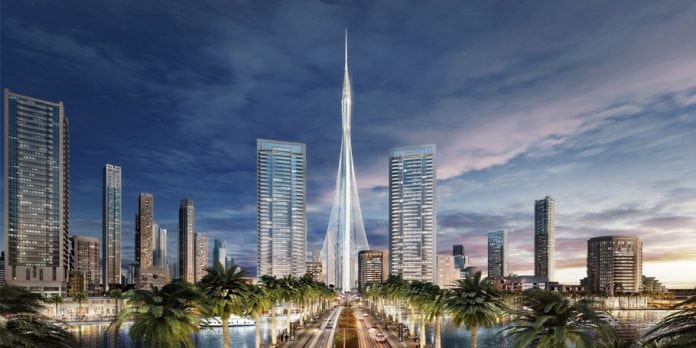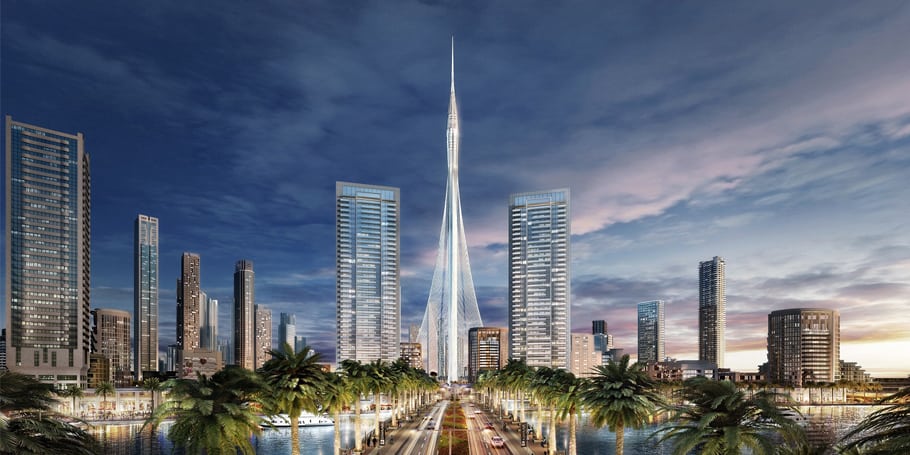
Anyone who has stood atop a skyscraper as Dubai’s Burj Khalifa, can attest to the power of nature at such heights. Not only is the wind strong, but it also behaves in complex ways when coming into contact with tall buildings, meaning there is more to creating mega-structures than just the aesthetic.
With this in mind, Dubai developer Emaar Properties has confirmed that it has completed advanced wind tunnel tests on The Tower at Dubai Creek Harbour, which is set to be 100 meters taller than the 828-meter Burj Khalifa, currently the world’s tallest building. As an observation tower with less than 50 percent of its height occupied by usable floor area, it will not be considered a skyscraper and thus is ineligible for the list of the world’s tallest buildings. It could, however, take the title as the world’s tallest structure once complete.
The developer said the wind tests were crucial in defining the final height and design aspects of the tower, while the project’s Spanish-Swiss architect Santiago Calatrava added that they “were an important component in the structural design stage, and we have deployed innovative engineering techniques to confirm the strength of the new icon.”
The tests involved 12 different analyses and testing methods to ensure that all possible cases were considered, according to the developer. They were carried out for the entirety of the project using a scale model. As part of climate tests in the local area, measurements were taken at different heights, including data provided by the weather stations. Seismic studies were also done on the local ground conditions “to guarantee the maximum safety and stability of the building. The design of The Tower also includes multiple damper systems and shock absorption systems, located at different points and heights,” the developer said.
Work on the project began in June 2016, with Aurecon appointed as the engineer and architect on record and the Calatrava team leading design and engineering works. Some features of the tower will include a VIP observation garden deck and glazed rotating balconies.
The structure is scheduled to be delivered ahead of Expo 2020 Dubai starting in October of that year, and is to cost USD$1 billion to build.























![The Square at Nad Al Sheba Gardens Now Open hope tax season treated you well! Just checking in—ready to refocus on growing your business? I remember how we discussed scaling your [specific aspect of their business, e.g., online presence] but paused due to time constraints. We now offer a streamlined 6-month plan that delivers real results without adding to your workload. Let me know if you'd like to chat—I’d love to help you pick up where we left off!](https://www.dubaichronicle.com/wp-content/uploads/2024/11/The-Square-5-218x150.jpg)









